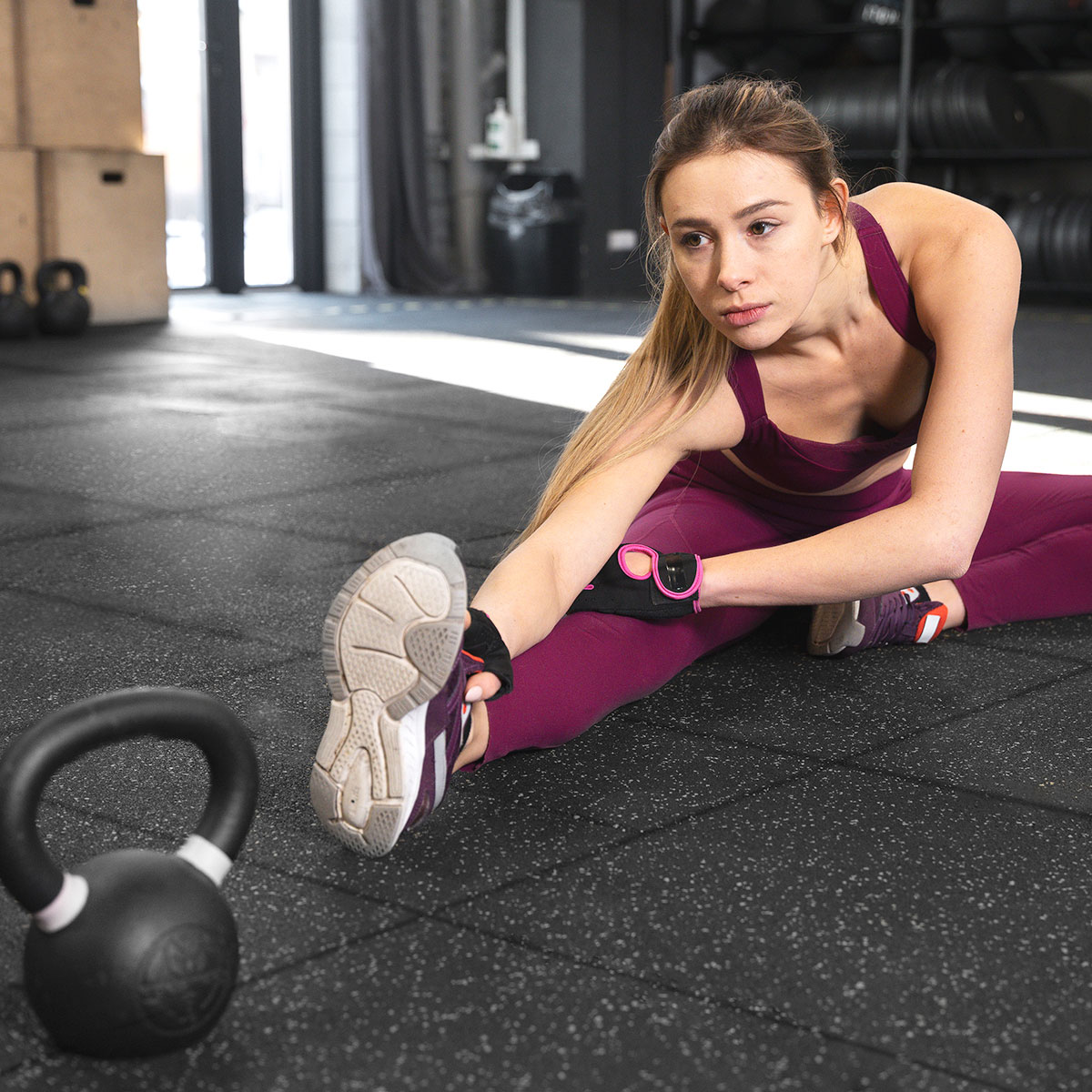
What Kind of Flooring is Best for a Gym?
When selecting gym flooring for a professional gym, prioritize durability, excellent shock absorption, ease of cleaning, appropriate thickness for the activities performed, and a design that suits the gym’s aesthetic, considering factors like the type of exercises, traffic volume, and budget while focusing primarily on rubber flooring as the best option for most professional settings.
What Kind of Flooring is Best for a Gym? Key factors to consider:
• Material:
Rubber flooring: Considered the best choice for most professional gyms due to its high durability, excellent shock absorption, and slip resistance. Rubber is capable of handling high-impact activities and heavy equipment without degradation, making it ideal for weight rooms, cardio areas, and other high-traffic zones.
Foam flooring: May be suitable for lighter activities or home gyms, but not ideal for heavy weightlifting due to potential compression issues. Foam is soft and comfortable but lacks the structural integrity needed for more demanding exercises.
Vinyl flooring: Can be a cost-effective option for certain areas, such as aerobic rooms or lounges, but may not offer the same level of impact absorption as rubber. Vinyl is easy to maintain and clean but doesn’t provide the cushioning required for heavy workouts.
• Thickness:
Weightlifting areas: Opt for thicker rubber flooring (around 3/4 inch) to provide maximum shock absorption and protection for both the floor and equipment. Thicker mats are essential to absorb the force of dropped weights and heavy machinery.
Cardio areas: A slightly thinner rubber flooring (around 1/2 inch) may suffice for areas where impact is lower but movement is frequent. This thickness offers a balance between comfort and cost-effectiveness, maintaining durability while providing adequate cushioning.
Functional and multi-use areas: Areas that are used for a variety of activities may require medium-thickness flooring (around 5/8 inch) to provide the versatility needed for both cardio and strength training exercises.
• Installation type:
Rubber tiles: Easy to install and replace individual tiles if needed. This makes it ideal for areas that require frequent adjustments or repairs. Interlocking tiles are convenient for smaller spaces and for gyms with changing layouts.
Rubber rolls: May be more cost-effective for large spaces but require professional installation. Rolls provide a seamless look and reduce the risk of dirt accumulating between tiles, but they can be more difficult to cut and adjust for custom spaces.
• Surface texture:
Fine texture: Good for most exercises, providing good grip without being overly aggressive. Fine textures are comfortable for a variety of activities, including cardio, light lifting, and yoga, offering a balance of friction and ease of movement.
Ribbed texture: Can be beneficial for high-impact activities like plyometrics, where extra grip and durability are needed. This texture helps prevent slipping during explosive movements and provides enhanced safety during intense workouts.
• Maintenance:
Cleaning ease: Choose flooring that can be easily swept, mopped, and sanitized. Rubber flooring typically requires minimal maintenance, and its non-porous surface helps in quick and efficient cleaning.
Stain resistance: Consider potential spills (e.g., sweat, water, or oils) and choose a material that resists staining. Rubber flooring is generally resistant to staining, while foam or vinyl may show marks more easily and require more frequent cleaning to maintain their appearance.
Specific considerations for different gym areas:
Weightlifting area: Thick rubber flooring with a slightly textured surface for optimal grip and impact absorption. A denser material provides stability and helps minimize vibrations from heavy lifting, while the textured surface prevents slipping during exercises like deadlifts or squats.
Cardio area: Thinner rubber flooring with a smooth surface for easy movement. In this zone, flooring that supports long-term durability while allowing for smooth gliding of equipment like treadmills, bikes, and ellipticals is key.
Free weight area: Dense rubber flooring with good slip resistance to ensure safety during dynamic movements and when handling heavy weights. This area needs flooring that can absorb high-impact drops and provide secure footing, reducing the risk of injury.
By considering these factors—material type, thickness, installation method, surface texture, and maintenance needs—gym owners can ensure their flooring choice supports the gym’s activities, safety standards, and overall aesthetic, creating an environment that meets both practical and aesthetic goals.

